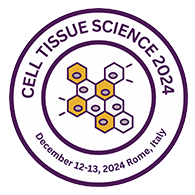Cellular and Gene Therapy
Cell therapy is therapy during which cellular material is injected into a patient. Nowadays 2 distinct classes of cell therapy are: the first class is cell therapy in mainstream drugs. This is often the topic of intense research and the basis of potential therapeutic benefit. The second class is in alternative medicine and perpetuates the practice of injecting animal materials to cure disease. The target of cell therapy is to revive the lost function instead of manufacturing a brand-new organ that may cause duplicity and undesirable effects. Gene therapy is that the therapeutic delivery of nucleic acid polymers into a patient's cells as a drug to treat disease. Gene therapy may be a way to fix a genetic drawback at its supply. The polymers are either translated into proteins, interfere with target gene expression, or presumably correct genetic mutations. The foremost common kind uses a deoxyribonucleic acid that encodes a useful, therapeutic gene to exchange a mutated gene. The compound molecule is packaged along with a "vector” that carries the molecule within cells. The vector incorporates genes into chromosomes. The expressed nucleases then knock out and replace genes within the body. These therapies have had good results, though the deficiency of the beginning material could represent a significant limitation.
- Cell-Based Assays
- Cell Therapy Products
- Vectors Used In Gene Therapy
- Viral Gene Therapy
- Gene Therapy For Diseases
- Development & Production
- Risks and Benefits
- Key Aspects for Consideration in Regulatory Guidance
Related Conference of Cellular and Gene Therapy
21th World Congress on Tissue Engineering Regenerative Medicine and Stem Cell Research
16th International Conference on Human Genetics and Genetic Diseases
19th International Conference on Genomics & Pharmacogenomics
Cellular and Gene Therapy Conference Speakers
Recommended Sessions
- Advancement in Cancer Treatments
- Anti-Aging Medicine
- Artificial Organs
- Biobanking
- Biomaterial and Bioengineering
- Cancer Cell Biology
- Cell Biology
- Cellular and Gene Therapy
- Epigenetics and Epigenome
- Ethical Issues and Marketing Status Around the Globe
- Precision Medicine
- Regenerative Medicine
- Stem Cells and its Applications
- Tissue Culture and Preservation
- Tissue Engineering
- Tissue Repair and Regeneration
Related Journals
Are you interested in
- 3D Bioprinting, Organ Fabrication & Bioartificial Tissues - Stem Cell 2026 (Netherlands)
- Aging Biology, Longevity Science & Cellular Rejuvenation - Stem Cell 2026 (Netherlands)
- Artificial Intelligence and Computational Biology in Regenerative Medicine - Stemgen 2026 (Japan)
- Bioinformatics, AI Models & Predictive Regeneration - Stem Cell 2026 (Netherlands)
- Biomaterials and Nanotechnology in Regenerative Medicine - Stemgen 2026 (Japan)
- Cancer Stem Cells & Targeted Therapeutics - Stem Cell 2026 (Netherlands)
- Cancer Stem Cells and Oncology - Stemgen 2026 (Japan)
- Cardiac, Vascular & Musculoskeletal Regeneration - Stem Cell 2026 (Netherlands)
- Cardiovascular Regeneration - Stemgen 2026 (Japan)
- Clinical Translation of Stem Cell Therapies - Stem Cell 2026 (Netherlands)
- Clinical Trials and Translational Stem Cell Research - Stemgen 2026 (Japan)
- Commercialization, Biobanking & Industry Innovations - Stem Cell 2026 (Netherlands)
- Ethical, Legal, and Social Implications in Stem Cell Research - Stemgen 2026 (Japan)
- Ethical, Regulatory & Quality Control Frameworks - Stem Cell 2026 (Netherlands)
- Exosomes, Extracellular Vesicles & Cell-Free Therapeutics - Stem Cell 2026 (Netherlands)
- Future Trends: Organoids, Bioengineering, and Next-Generation Therapies - Stemgen 2026 (Japan)
- Gene Editing and CRISPR Technologies - Stemgen 2026 (Japan)
- Gene Editing, CRISPR Therapies & Regenerative Genomics - Stem Cell 2026 (Netherlands)
- Induced Pluripotent Stem Cells (iPSCs) and Reprogramming - Stemgen 2026 (Japan)
- Mesenchymal Stem Cells (MSCs) in Therapy - Stemgen 2026 (Japan)
- Regeneration in Neurodegenerative & Spinal Cord Disorders - Stem Cell 2026 (Netherlands)
- Regenerative Approaches in Diabetes & Metabolic Disorders - Stem Cell 2026 (Netherlands)
- Regenerative Dentistry and Craniofacial Applications - Stemgen 2026 (Japan)
- Regenerative Immunology & Immune Modulation - Stem Cell 2026 (Netherlands)
- Regenerative Medicine and Tissue Engineering - Stemgen 2026 (Japan)
- Stem Cell Banking and Cryopreservation - Stemgen 2026 (Japan)
- Stem Cell Biology and Cellular Mechanisms - Stemgen 2026 (Japan)
- Stem Cell Engineering & Cellular Reprogramming - Stem Cell 2026 (Netherlands)
- Stem Cells in Neurological and Neurodegenerative Disorders - Stemgen 2026 (Japan)
- Tissue Engineering, Biomaterials & Smart Scaffolds - Stem Cell 2026 (Netherlands)

